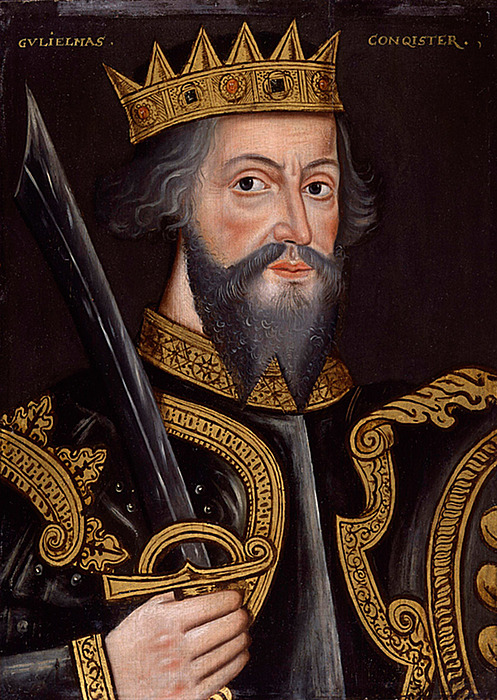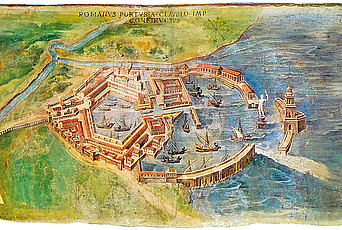How Do You Say “Bastard” in Medieval Latin?

Early this December, newspaper headlines made the sensational claim that recent DNA evidence had called into question the legitimacy of the British monarchy: scientists had identified what is known as a false-paternity event. Genetic analysis of the remains of King Richard III of England and his modern-day descendants indicated the possibility that Richard’s mother, grandmother, great-grandmother, or great-great-grandmother had a child with someone other than her husband and successfully passed that child off as her husband’s son and heir, thus corrupting the royal patriline with less-than-royal blood.
If a scholar of medieval law can be permitted to reassure a reigning monarch and her family, I would like to suggest that their dynastic claim to the throne remains safe. Medieval England by the time of Richard III had developed strict rules against allowing illegitimate children to inherit from their fathers, particularly royal or noble titles, but English law also maintained quite a generous presumption of paternity. As long as it was remotely possible that the mother’s husband could have conceived the child she presented as his, that child’s right as heir could not be challenged.
That does not mean that illegitimacy raised no problems in the Middle Ages. It most certainly did. But the various ideas of illegitimate birth held by people in the Middle Ages were not necessarily the sorts of problems that we think of today. This year, I have the privilege of investigating the history of ideas of illegitimate birth, and the exclusion of bastards from royal succession, in the former institution of the great scholar of kingship Ernst Kantorowicz, and in the company of brilliant friends and colleagues who have repeatedly challenged and inspired me since my arrival in September.
As I am finding, analysis of the language of illegitimate birth reveals a rich, complex vocabulary used to indicate something less than fully legitimate birth. Terminology included both new and old words, plucked from ancient sources or transliterated from medieval vernacular languages. We find this terminology in the widest range of medieval sources, used to describe contemporaries, ancestors, and biblical and even mythological figures. Definitions vary over time and space, but also depending on the context, the kind of source, and, of course, authorial intentions.
Today we use the term bastard as an insult, or to describe children born outside lawful marriage. Before the thirteenth century, definitions of illegitimate birth offer more complexity and flexibility. In analyzing the language of illegitimate birth as it appears in medieval sources, we can identify three main concerns, which sometimes overlapped and were, on occasion, quite willfully conflated: social status, paternity, and marital status. Prior to the thirteenth century, the marital status of the parents had far less importance for royal succession than we might expect. Instead, attention largely focused on a child’s mother, her social status, and her sexual morals.
Consider, for example, William the Conqueror. Born in about 1028 to Robert, Duke of Normandy, and a woman most clearly not his wife, Herleva, William was nevertheless recognized by his father as his heir. Despite his youth and questionable birth, he managed to conquer and rule first Normandy and then England, and to pass his kingdom and titles onto his own heirs. This most famous of royal bastards, William I, Duke of Normandy and King of England, we find called bastard in medieval sources, of course, bastardus or bastart, but also called nothus, an ancient Greek term used in Athens to indicate illegitimate birth, birth to anyone other than two Athenian citizens. Other royal bastards might be called mamzer, a Hebrew term for illegitimate, or spurius, an ancient Latin term for a child born to illicit sex, or to an unknown father.
To my knowledge, medieval authors never called William the Conqueror mamzer, a term they usually reserved for the children of women described as prostitutes or promiscuous. Nor did they call him spurius, which they typically associated with more serious kinds of illicit or illegal sex, such as the child of a nun or priest, or the child of adultery or incest. The relationship of the bachelor Duke Robert and his concubine Herleva, if not a formal marriage, did not offend on these grounds. Nor, evidently, did anyone at the time question Herleva’s sexual honor, or, as a result, William’s paternity.
What, then, about William’s parentage did offend? Why was he called bastard? Writing in the twelfth century, chronicler Orderic Vitalis described this William as nothus. What might Orderic have meant by it? The only elaboration he offered, in a most famous passage, and the subject of much scholarly contention, suggests a concern not with William’s mother’s marital status but rather with his maternal lineage. During William’s siege of Alençon in the 1050s, as Orderic wrote, the people gathered on the battlements taunted William not about the fact that his father had not married his mother, but about his mother Herleva’s paternity, as the daughter of either a tanner or an undertaker. In other words, they objected not to his birth out of wedlock, but to his mother’s low status. This kind of illegitimate birth matches the definition of nothus often found in early medieval sources. Etymological texts produced in the Middle Ages, such as those of Archbishop Isidore of Seville, the Venerable Bede, and Hrabanus Maurus, all define nothus as a child of mixed parentage, of a noble father and an ignoble mother.
This preoccupation with mixed social status, this distaste for rulers with lower-status mothers, persists in subsequent centuries. Chroniclers of the twelfth and thirteenth centuries explicitly describe as nothus or spurius, as illegitimate sons born to lower-status mothers, not only William of Normandy (d. 1087), but also the Sicilian king Tancred of Lecce (d. 1194) and Emperor Frederick II’s son Manfred, another king of Sicily (d. 1266). We also find apologetic sources that explain that a royal child, if admittedly born outside of marriage, had a noble mother, even a most noble mother, nobilissima. Examples include the late-Carolingian emperor Arnulf, and, in the eleventh and twelfth centuries, the many children born to Iberian kings and their noble concubines, children who became kings and queens of Aragon, Castile, León, and Portugal.
To return to William of Normandy, our earliest sources describe William as bastard. The origins for this term mystify. It is evidently a medieval invention that first appears in the eleventh century, in sources written in Northern France or about people in Northern France. Some dictionaries link bastardum to the (medieval) Latin word bastum, packsaddle. From this, it is said, developed the idea that a bastard was a child born in the saddle, in French, fils de bast. We can understand this as indicating birth outside of a marriage bed, in transit. However, we also find the term used, like nothus, to indicate a union of persons born to parents of mixed social status. As one late-eleventh-century chronicler declared, the French called William bastard because of his mixed parentage: He bore both noble and ignoble blood, obliquo sanguine. Indeed, another possibility for the origins of the word bastard is not the bastum, or saddle, but bas, base, meaning baseborn.
William’s success, despite his birth, is not as exceptional as a good deal of prior scholarship suggests. Many other kings before and after him, and even queens, successfully inherited and reigned despite allegations of illegitimacy. We find the children of concubines, the children of annulled marriages, and even the children of monks and nuns inheriting noble and royal title, throughout the twelfth century. What scholars have often presented as evidence for a rule that excluded children born to something other than legitimate marriage is really evidence of the exercise of arbitrary power. Inheritance practices, while firmly rooted in an idea of family, operated with real fluidity and flexibility as late as the twelfth century, and even, in some places, into the thirteenth century. Fathers, for example, exercised this power in choosing one child rather than another as heir. They favored, variously, different kinds of children, including younger sons and also daughters, over their eldest sons.
In this pre-thirteenth-century world, the most intense attention was paid not to the formation of legitimate marriages but to the lineage and respectability of mothers. All this has all too often been confused with a fixed rule about legitimate marriage and lawful succession, which certainly received a good deal of lip service throughout the Middle Ages, but only had real legal meaning, legal force, beginning in the second half of the twelfth century.
Only then, particularly in the late twelfth and early thirteenth centuries, did birth outside of lawful marriage render a child illegitimate, ineligible to inherit noble or royal title. In the thirteenth century, both bastard and spurius came to signify a child born to anything other than a legitimate marriage, as defined by the canon law of the Catholic Church. This included even children born to parents both of the highest rank and married to each other, if the pope denounced the marriage as illegal. We can trace this evolution, for example, in the chronicles that describe an early twelfth-century illegal marriage made between King Philip I of France and Bertrada de Montfort, a powerful woman of high lineage and often called his queen, despite some ecclesiastical opposition to their bigamous union. In the earliest sources, we find denunciations of their marriage and cohabitation, but not of their children. We find these children called bastards, bast, only in a thirteenth-century French translation of an older Latin chronicle, which added this and other words to the original text. As this suggests, a discourse dominated by concerns with social status and sexual morality of the mother gave way to a discourse dominated by concerns over legitimate marriage. It is also precisely at this moment that ecclesiastical jurists, some of them popes, developed various legal mechanisms to provide, for a price, legitimacy to those whom the law classified as bastards. The new history of illegitimacy I am proposing, therefore, calls into question not only current assumptions about ideas of illegitimate birth and their implementation in practice, but also the role of the church in this history.


